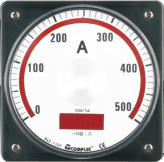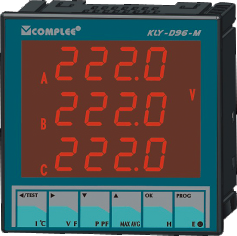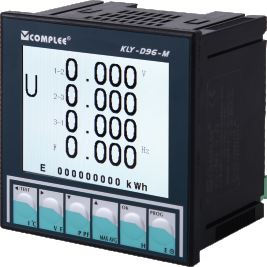Wedoany.com Report-Nov 18, The US Department of Defense is scouting for new clean power resources on its vast and numerous bases. The aim is to cut dependence on off-base civilian electrical infrastructure. New, enhanced geothermal energy systems are beginning to offer that opportunity, and the US Air Force is already exploring how to deploy them for producing green hydrogen.
Four New Geothermal Energy Projects For The US Department Of Defense
Conventional utility-scale geothermal energy systems depend on sites with specific rock, water, and heat characteristics. These requirements place considerable limits on site selection. Here in the US, for example, most utility-scale geothermal power plants are located in parts of the the western states and Hawaii, where optimal geothermal resources are located relatively close to the surface.
During the Obama administration, the US Department of Energy began stepping up efforts to support the development of new, enhanced geothermal energy systems that can be adapted to a more widespread range of underground conditions. A centerpiece of the agency’s enhanced geothermal program is FORGE, the Frontier Observatory for Research in Geothermal Energy (see more EGS background here).
Time spent drilling for geothermal resources is also money spent, so reducing drilling time has been a key goal of FORGE since it launched three years ago. Last spring, the Energy Department reported that the effort has already paid off, with drilling time reduced to 60 hours at an equivalent depth of 6,000 feet, compared to 440 hours previously.
All that activity has caught the eye of the Defense Department. Last year, the Air Force, Army, and Defense Innovation Unit collaborated with three geothermal industry innovators to launch four new enhanced geothermal energy demonstration projects:
A water-conserving system developed by the Canadian firm Eavor Inc., to be trialed at Joint Base San Antonio in Texas.
A demonstration of an integrated technology suite by the Atlanta, Georgia, firm Teverra, to be conducted at Fort Wainwright in Alaska.
An AI-enabled geothermal energy assessment system from the firm Zanskar Geothermal & Minerals, Inc., at Mountain Home Air Force Base in Idaho, and Fort Irwin in California.
Even More Enhanced Geothermal Energy For The Defense Department
The Defense Department didn’t stop there. In April of this year, the Army, Navy, and Defense Innovation Unit partnered with the Environmental Security Technology Certification Program to introduce three additional industry stakeholders to the enhanced geothermal initiative:
Fervo Energy will demonstrate its innovations in drilling and subsurface analytics at Naval Air Station Fallon in Nevada.
GreenFire Energy will introduce its advanced GreenLoop ® closed-loop technology to Naval Air Facility El Centro in California.
Sage Geosystems will explore the use of its take-me-anywhere geopressured geothermal system at Fort Bliss in Texas.
If you’re wondering what “geopressured” adds to the mix, that’s a good question. It refers to Sage’s uses of fracking technology — borrowed from the oil and gas industry — to create pressurized, geothermal-friendly rock formations.
In September, the Air Force also stepped in with yet another enhanced geothermal demonstration for Sage Geosystems. The pilot-scale test site will take place at an off-base site somewhere in Texas.
The Green Hydrogen Angle
Green hydrogen is a gas produced from water in electrolysis systems, which are powered by electricity and a catalyst. The green hydrogen angle can crop up anywhere excess renewable energy is available. That fits the profile of geothermal energy, which is available at a constant rate 24/7, no matter what the season.
As with conventional hydrogen, green hydrogen can be used as a fuel for aircraft, among many other uses. The cost is currently greater than conventional hydrogen, which is sourced from methane gas. However, cost is no barrier to defense agencies yearning for a way to avoid transporting fossil gas, or any other fuel from a distant refinery to its point of use. Green hydrogen can be produced on site, wherever water and electricity are available (see more green hydrogen background here).
The Army, Navy, and Air Force are already exploring hydrogen fuel cell aircraft. Green hydrogen fuel is the next logical step. If all goes according to plan, geothermal energy will provide a hyper-local source of zero emission, 24/7 electricity for electrolysis systems, without the entanglements that can accompany wind turbines and solar arrays.
In September, the Air Force put out the call for vendors to come up with a next-generation geothermal system that can be deployed to produce green hydrogen for fuel cells, with the entire operation taking place on federal property.
Conventional geothermal technology won’t do the trick.
The Air Force explains.
Despite its advantages, there are numerous technological and geological barriers to geothermal energy that have hindered the U.S. government’s ability to construct a utility-scale geothermal facility on federal land to directly supply electricity to its missions,
More Green Hydrogen For The Army, Navy, & Air Force
The Air Force solicitation comes through a Defense Department funding platform called Tradewinds under the title,
Geothermal for Electricity and Green Hydrogen Production.
Interesting! Tradewinds is a video archive better known for providing a streamlined pathway for the Defense Department to procure advanced digital and AI solutions. If you have any thoughts about the connection to geothermal energy, drop a note in the comment thread. One angle is suggested by the Air Force Office of Energy Assurance, which launched in 2016 with the aim of deploying data-driven analyses to identify new opportunities for both energy and water resilience.
The Tradewinds geothermal solicitation requires vendors to mobilize data and produce resource maps before going on to design geothermal energy systems for Defense facilities. The Air Force also specifies that the awarded system (or systems) will
Produce electricity and green hydrogen through electrolysis to power fuel cells.
The initial solicitation was limited to prototypes for testing at Air Force facilities in the US. More recently, the Air Force updated the terms to underscore the global reach of both geothermal energy and green hydrogen.
The Air Force explained in the update,
Notably, the solicitation allows a vendor whose video submission has been deemed “awardable” to pursue geothermal projects anywhere in the world with the Air Force, Army, and Navy at any time in the future without having to engage in any further competition,
Interesting! How the worm has turned. The Defense Department stepped up its search for alternative fuels during the Obama administration with a focus on biofuels, only to face pushback from Republican members of Congress. To this day, the transition to biofuel still faces a long, slow road. Now the one-two punch of green hydrogen and geothermal energy is poised to give the Army, Navy, and Air Force what they wanted all along: a non-fossil, zero emission, sustainable, resilient, and secure energy resource.

















